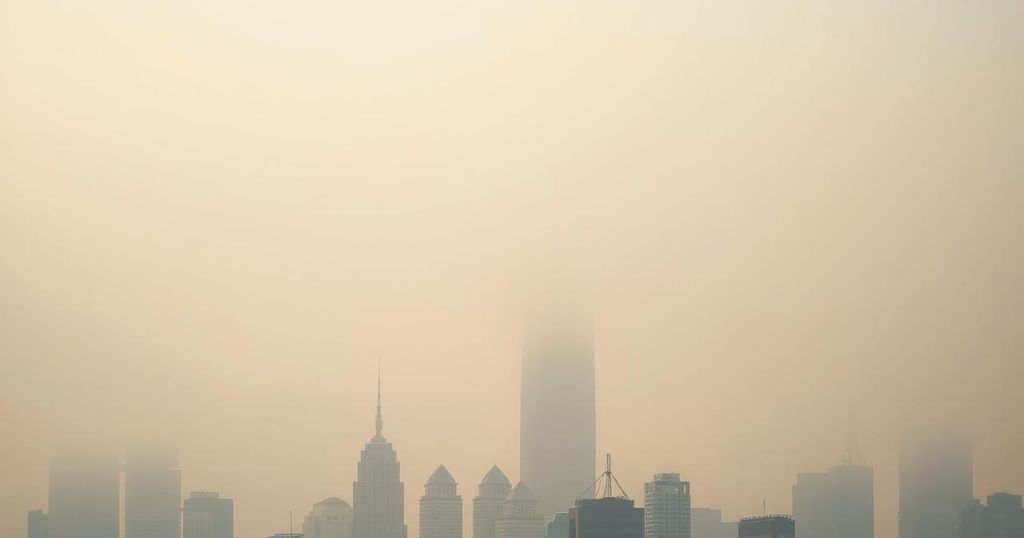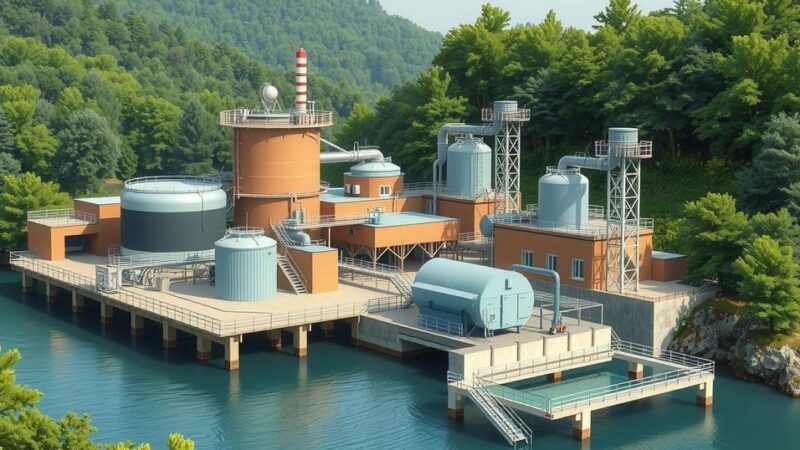The IQAir “World Air Quality Report 2024” reveals that India’s PM 2.5 concentration is over ten times the WHO safe limit, reaching 50.6 µg/m³. The report identifies India as among the nations with the worst air quality, with significant contributions from industrial emissions and vehicular pollution. A slight overall decline in PM 2.5 levels has been noted, but urgent action is needed to combat air pollution and protect public health.
In 2024, India’s annual PM 2.5 concentration reached 50.6 micrograms per cubic meter (µg/m³), a level over ten times the World Health Organization’s recommended limit of 5 µg/m³. This marks a slight decrease from the previous year’s figure of 54.4 µg/m³, according to the latest “World Air Quality Report 2024” by IQAir, a Swiss air quality technology firm. PM 2.5 refers to fine particulate matter smaller than 2.5 micrometers, which pose significant health risks.
The IQAir report highlights that only seven countries and 17% of cities worldwide met the WHO’s air quality standards. The countries that complied include Australia, Bahamas, Barbados, Estonia, Grenada, Iceland, and New Zealand. Tragically, India is among the nations with the highest PM 2.5 concentrations, trailing behind Chad (91.8 µg/m³), Bangladesh (78 µg/m³), Pakistan (73.7 µg/m³), and the Democratic Republic of the Congo (58.2 µg/m³).
In India, Byrnihat recorded the highest PM 2.5 concentration at 128.2 µg/m³, followed by New Delhi with 91.8 µg/m³—higher than N’Djamena, the capital of Chad, at 91.6 µg/m³, and Dhaka, Bangladesh, at 78 µg/m³. New Delhi’s PM 2.5 figures stood at 92.7 µg/m³ in the previous year, with Dhaka close behind at 80.2 µg/m³. These alarming levels indicate a persistent air quality crisis in urban areas.
Frank Hammes, the CEO of IQAir, emphasized the grave implications of air pollution on health and the environment, stating, “Air quality data saves lives. It creates much-needed awareness, informs policy decisions, guides public health interventions, and empowers communities to take action to reduce air pollution and protect future generations.”
In terms of local statistics, Faridabad had an average PM 2.5 concentration of 101.2 µg/m³, while Gurugram recorded 87.5 µg/m³. It is worth noting that there was a 7% nationwide reduction in PM 2.5 levels in 2024 compared to 2023, although this decline remains insufficient given the critical health concerns.
Rapid industrial growth, excessive vehicular emissions, and construction activities are primary contributors to India’s persistent air quality issues. According to Vijay Choudhary, a regional officer of the Haryana State Pollution Control Board, controlling emissions is a daunting task. Measures are being taken, such as restricting industrial emissions and enhancing waste management, but geographical factors and seasonal weather conditions exacerbate pollution.
Resident advocate Gauri Sareen of Making Model Gurugram remarked on the slow responses to air quality concerns, stating, “But the response has been slow and inadequate. People, especially children and the elderly are suffering from respiratory illnesses due to prolonged exposure to toxic air.” Furthermore, Avinash Chanchal, campaign director of Greenpeace India, pointed to inadequate public transportation infrastructure as a major contributor to air pollution, stating, “The report again shows the steps being taken under clean air action plans to control pollution remain insufficient.”
Public transport improvements must become a priority as they are crucial in addressing the rising air pollution levels effectively.
In conclusion, India’s PM 2.5 concentration remains critically high, exceeding the WHO’s safe limits by over ten times in 2024. This situation is exacerbated by industrial emissions, transportation issues, and insufficient policy responsiveness. While some progress has been observed with a 7% reduction in PM 2.5 levels, the ongoing health impacts on vulnerable populations necessitate urgent action and comprehensive strategies to enhance air quality across the nation.
Original Source: www.hindustantimes.com






